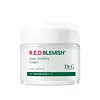What's inside
What's inside
 Key Ingredients
Key Ingredients

 Benefits
Benefits

 Concerns
Concerns

No concerns
 Ingredients Side-by-side
Ingredients Side-by-side

Water
Skin ConditioningGlycerin
HumectantButylene Glycol
HumectantDicaprylyl Ether
EmollientNiacinamide
Smoothing1,2-Hexanediol
Skin ConditioningHydrogenated Polydecene
EmollientPentylene Glycol
Skin ConditioningDicaprylyl Carbonate
EmollientVinyldimethicone
Caprylyl Methicone
Skin ConditioningHydroxyethyl Acrylate/Sodium Acryloyldimethyl Taurate Copolymer
Emulsion StabilisingPanthenol
Skin ConditioningAcrylates/C10-30 Alkyl Acrylate Crosspolymer
Emulsion StabilisingDimethiconol
EmollientPolymethylsilsesquioxane
Tromethamine
BufferingDipotassium Glycyrrhizate
HumectantGlyceryl Acrylate/Acrylic Acid Copolymer
HumectantEthylhexylglycerin
Skin ConditioningXanthan Gum
EmulsifyingCentella Asiatica Leaf Extract
Skin ConditioningFructooligosaccharides
HumectantSodium Phytate
Allantoin
Skin ConditioningLactobacillus Ferment
Skin ConditioningLactobacillus/Soybean Ferment Extract
Skin ConditioningLeuconostoc/Radish Root Ferment Filtrate
AntimicrobialYeast Ferment Extract
Skin ConditioningTocopherol
AntioxidantEpigallocatechin Gallate
AntioxidantMadecassoside
AntioxidantBeta-Glucan
Skin ConditioningCentella Asiatica Extract
CleansingAsiaticoside
AntioxidantMadecassic Acid
Skin ConditioningAsiatic Acid
Skin ConditioningWater, Glycerin, Butylene Glycol, Dicaprylyl Ether, Niacinamide, 1,2-Hexanediol, Hydrogenated Polydecene, Pentylene Glycol, Dicaprylyl Carbonate, Vinyldimethicone, Caprylyl Methicone, Hydroxyethyl Acrylate/Sodium Acryloyldimethyl Taurate Copolymer, Panthenol, Acrylates/C10-30 Alkyl Acrylate Crosspolymer, Dimethiconol, Polymethylsilsesquioxane, Tromethamine, Dipotassium Glycyrrhizate, Glyceryl Acrylate/Acrylic Acid Copolymer, Ethylhexylglycerin, Xanthan Gum, Centella Asiatica Leaf Extract, Fructooligosaccharides, Sodium Phytate, Allantoin, Lactobacillus Ferment, Lactobacillus/Soybean Ferment Extract, Leuconostoc/Radish Root Ferment Filtrate, Yeast Ferment Extract, Tocopherol, Epigallocatechin Gallate, Madecassoside, Beta-Glucan, Centella Asiatica Extract, Asiaticoside, Madecassic Acid, Asiatic Acid
Aloe Barbadensis Leaf Extract
EmollientGlycerin
HumectantWater
Skin ConditioningButylene Glycol
HumectantCaprylic/Capric Triglyceride
MaskingRosmarinus Officinalis Leaf Extract
AntimicrobialLavandula Angustifolia Extract
Skin Conditioning1,2-Hexanediol
Skin ConditioningPropanediol
SolventEthylhexylglycerin
Skin ConditioningVerbena Officinalis Extract
EmollientChamomilla Recutita Flower Extract
MaskingAcrylates/C10-30 Alkyl Acrylate Crosspolymer
Emulsion StabilisingArginine
MaskingPolyglyceryl-3 Methylglucose Distearate
EmulsifyingHydrolyzed Glycosaminoglycans
HumectantMaltodextrin
AbsorbentCeramide NP
Skin ConditioningTamarindus Indica Seed Polysaccharide
Skin ConditioningAloe Barbadensis Leaf Extract, Glycerin, Water, Butylene Glycol, Caprylic/Capric Triglyceride, Rosmarinus Officinalis Leaf Extract, Lavandula Angustifolia Extract, 1,2-Hexanediol, Propanediol, Ethylhexylglycerin, Verbena Officinalis Extract, Chamomilla Recutita Flower Extract, Acrylates/C10-30 Alkyl Acrylate Crosspolymer, Arginine, Polyglyceryl-3 Methylglucose Distearate, Hydrolyzed Glycosaminoglycans, Maltodextrin, Ceramide NP, Tamarindus Indica Seed Polysaccharide
 Reviews
Reviews

Ingredients Explained
These ingredients are found in both products.
Ingredients higher up in an ingredient list are typically present in a larger amount.
1,2-Hexanediol is a synthetic liquid and another multi-functional powerhouse.
It is a:
- Humectant, drawing moisture into the skin
- Emollient, helping to soften skin
- Solvent, dispersing and stabilizing formulas
- Preservative booster, enhancing the antimicrobial activity of other preservatives
Acrylates/C10-30 Alkyl Acrylate Crosspolymer is a synthetic polymer. It is used to thicken and improve the texture of products. Due to its properties, it can prevent water and oil ingredients from separating.
Butylene Glycol (or BG) is used within cosmetic products for a few different reasons:
Overall, Butylene Glycol is a safe and well-rounded ingredient that works well with other ingredients.
Though this ingredient works well with most skin types, some people with sensitive skin may experience a reaction such as allergic rashes, closed comedones, or itchiness.
Learn more about Butylene GlycolEthylhexylglycerin (we can't pronounce this either) is commonly used as a preservative and skin softener. It is derived from glyceryl.
You might see Ethylhexylglycerin often paired with other preservatives such as phenoxyethanol. Ethylhexylglycerin has been found to increase the effectiveness of these other preservatives.
Glycerin is already naturally found in your skin. It helps moisturize and protect your skin.
A study from 2016 found glycerin to be more effective as a humectant than AHAs and hyaluronic acid.
As a humectant, it helps the skin stay hydrated by pulling moisture to your skin. The low molecular weight of glycerin allows it to pull moisture into the deeper layers of your skin.
Hydrated skin improves your skin barrier; Your skin barrier helps protect against irritants and bacteria.
Glycerin has also been found to have antimicrobial and antiviral properties. Due to these properties, glycerin is often used in wound and burn treatments.
In cosmetics, glycerin is usually derived from plants such as soybean or palm. However, it can also be sourced from animals, such as tallow or animal fat.
This ingredient is organic, colorless, odorless, and non-toxic.
Glycerin is the name for this ingredient in American English. British English uses Glycerol/Glycerine.
Learn more about GlycerinWater. It's the most common cosmetic ingredient of all. You'll usually see it at the top of ingredient lists, meaning that it makes up the largest part of the product.
So why is it so popular? Water most often acts as a solvent - this means that it helps dissolve other ingredients into the formulation.
You'll also recognize water as that liquid we all need to stay alive. If you see this, drink a glass of water. Stay hydrated!
Learn more about Water